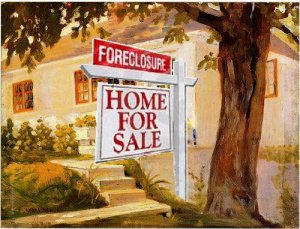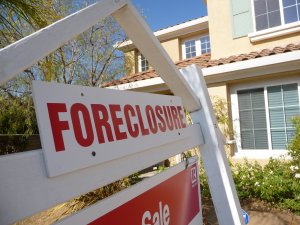Ventura County Foreclosure Process
 Some homeowners do not understand that there are several methods to stop foreclosure. Some steps include selling your home before foreclosure, a mortgage modification or other payment plan with the mortgage lender, or filing for bankruptcy. Dream Home Property Solutions, LLC will be happy to give you ideas on different strategies to help stop foreclosure. To find out more information or to discuss your particular situation, call us now at 805-250-8335!
Some homeowners do not understand that there are several methods to stop foreclosure. Some steps include selling your home before foreclosure, a mortgage modification or other payment plan with the mortgage lender, or filing for bankruptcy. Dream Home Property Solutions, LLC will be happy to give you ideas on different strategies to help stop foreclosure. To find out more information or to discuss your particular situation, call us now at 805-250-8335!
A foreclosure is when the owner of a home fails to make payments on their loan, usually to a bank or mortgage company, and the lender forces the sale of the home in order to recoup the money on the outstanding loan. The loan can be a standard mortgage, a home equity loan, or even a situation where a home owner refinanced their mortgage loan. In most cases, the lender has a lien against the home which they can use to secure repayment in situations like these. The foreclosure process can differ from state to state, but below is a short description of the foreclosure process in California.
Two Types Of Foreclosure
There are two types of foreclosure processes, nonjudicial and judicial. California is known as a nonjudicial state and that is the process that is discussed here. Although judicial foreclosures can occur in California, these are very rare. A nonjudicial foreclosure is used when there is a power-of-sale clause included in the deed of trust. The power-of-sale clause gives an independent third party, a trustee, the authority to sell the home at the request of the lender if the borrower fails to make payments on their loan. When using this process, the lender gives up their right to collect a deficiency judgment against the borrower, which is a money judgment from the court for the difference between the amount the property was sold for at auction and the total amount the borrower owed on the property. In other words, the lender cannot get a money judgment from the court against the borrower if the homes sales at auction for less than the borrower owes on it.
California Foreclosure Process
1. The lender is required to perform a foreclosure avoidance assessment, in which they must contact all parties on the mortgage loan to get an assessment of the borrower’s financial situation and to explore any and all options to avoid foreclosure. The borrower can have a lawyer or other advisor speak with the lender on their behalf, if they wish. After this first contact, the borrower then has 14 days to schedule an additional meeting to discuss ways on how foreclosure can be avoided. In addition, the foreclosure process cannot be started until after 30 days of the initial contact.
2. If a plan to avoid foreclosure has not been worked out between the borrower and the lender, the lender can file a Notice of Default (NOD) after 30 days of contacting the borrower for the foreclosure avoidance assessment. The NOD is the official beginning of the foreclosure process. The borrower will receive a copy of the NOD by certified mail within 10 business days of it being recorded. Once received by the borrower, they have 90 days from the recorded date to resolve the default.
 3. If the default amount is not resolved after 90 days of the recording of the Notice of Default, a Notice of Sale will be recorded which states that your home will go to auction in 21 days and be sold by the trustee. The Notice of Sale will be sent to the borrower by certified mail and will include information about the auction, property, and the trustee. The Notice of Sale will also be published weekly in a local newspaper for 3 consecutive weeks as well as being posted on your property as well as an additional public location. Any time after 21 days, the home can be sold at the public auction. The home will either be bought by a bidder or will go back to the lender if there is no successful bidder. The borrower has up to 5 days prior to the auction to resolve the default amount and prevent the home from being sold. Also, anyone with a vested interested in the property has the right to redeem the property up until the auction date, which would require payment of the entire loan, in full.
3. If the default amount is not resolved after 90 days of the recording of the Notice of Default, a Notice of Sale will be recorded which states that your home will go to auction in 21 days and be sold by the trustee. The Notice of Sale will be sent to the borrower by certified mail and will include information about the auction, property, and the trustee. The Notice of Sale will also be published weekly in a local newspaper for 3 consecutive weeks as well as being posted on your property as well as an additional public location. Any time after 21 days, the home can be sold at the public auction. The home will either be bought by a bidder or will go back to the lender if there is no successful bidder. The borrower has up to 5 days prior to the auction to resolve the default amount and prevent the home from being sold. Also, anyone with a vested interested in the property has the right to redeem the property up until the auction date, which would require payment of the entire loan, in full.
4. If a borrower’s home is sold at an auction, the winning bidder cannot just change the locks on the previous owner. The new owner must serve a 3-day written notice informing the previous owner that they now own the property and that their belongings need to be removed. If the previous owner does not relocate within the 3 days, the new owner must go through the courts and start the formal eviction process. If there are tenants that are renting a home that has been foreclosed on, there are certain rights that the renter is entitled to. To find out more, you can visit Tenants Together Tenant Resource Center.
Ventura County Foreclosure Assistance
If you foresee a situation like the above in your future, contact Dream Home Property Solutions, LLC today! We can assist you in these types of issues, and we may even be able to help you avoid foreclosure completely. Our specialized team has the ability to walk you through your options to see what will be the best course of action for your specific situation. Call us today at 805-250-8335 to find our more about our residential real estate services.
